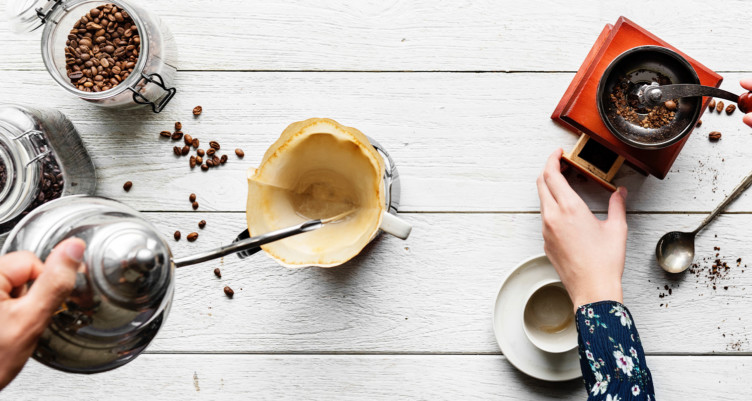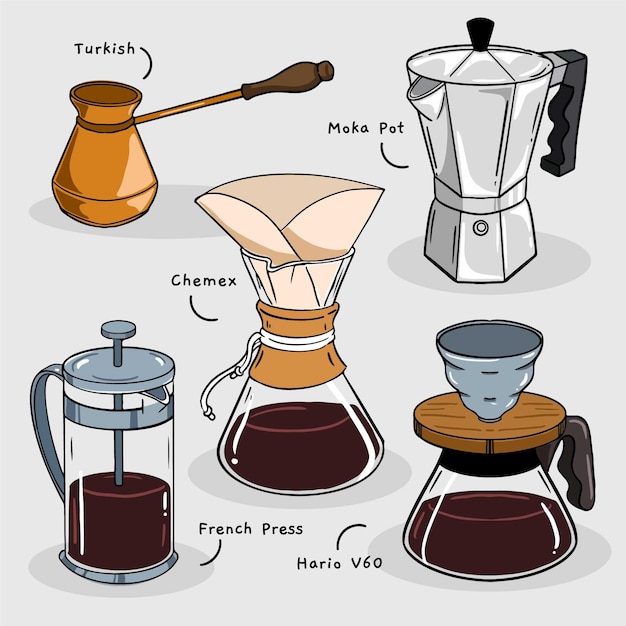Introducing the Scientific Research Behind Different Coffee Brewing Methods and Their Advantages
Introducing the Scientific Research Behind Different Coffee Brewing Methods and Their Advantages
Blog Article
The Science Behind Coffee Developing: How Temperature and Time Affect Your Drink
Recognizing the science behind coffee developing reveals that temperature level and time are not mere variables however crucial components that determine the beverage's taste profile and total high quality. The optimum brewing temperature normally falls between 195 ° F and 205 ° F, while the duration of extraction varies substantially across various approaches. This interplay of variables can cause a mug that is either unsatisfactory or wonderful. As we check out the nuances of these components, the inquiry occurs: how can one successfully balance temperature and time to accomplish that perfect brew?
The Chemistry of Coffee Extraction
The chemistry of coffee extraction looks into the elaborate processes that change raw coffee beans into the aromatic beverage delighted in worldwide. This improvement largely includes the solubility of numerous substances present in the beans, which are affected by factors such as work size, water high quality, and the developing technique employed.
During the developing process, warm water serves as a solvent, drawing out soluble substances, including high levels of caffeine, lipids, acids, and sugars, from the coffee grounds. Each compound adds to the flavor account, scent, and body of the last beverage. For circumstances, acids are accountable for tangy and bright notes, while oils add to an abundant mouthfeel.
The removal process is not consistent; different substances dissolve at various rates. The first stages of brewing extract acids and sugars, leading to a pleasurable acidity, while prolonged extraction can result in anger due to over-extraction of unfavorable compounds. Comprehending these chemical communications is essential for maximizing developing strategies, as the balance between extraction time and water temperature level can substantially influence the general quality of the coffee. Inevitably, understanding the chemistry of coffee extraction is vital to accomplishing a tasty and all-around mug.
Suitable Developing Temperatures
Discovering the appropriate brewing temperature is crucial for opening the complete potential of coffee flavors and scents - coffee brewing methods. Research study suggests that the optimum variety for brewing coffee lies in between 195 ° F to 205 ° F(90 ° C to 96 ° C) Within this array, the extraction procedure effectively dissolves the preferable soluble compounds in coffee beans, resulting in a balanced and tasty cup
Brewing at lower temperatures, such as listed below 195 ° F(90 ° C ), may lead to under-extraction, generating a weak and acidic mixture with low-key flavors. Alternatively, developing at temperature levels going beyond 205 ° F(96 ° C) can cause over-extraction, producing a bitter and severe preference due to the excessive dissolution of unfavorable compounds, such as tannins.
Furthermore, the suitable developing temperature level can vary depending upon the coffee bean kind and roast level. Lighter roasts often benefit from slightly greater temperatures to boost their complex flavor profiles, while darker roasts might be much better fit to lower temperatures to reduce anger.
Ultimately, preserving precision in brewing temperatures is essential for achieving a harmonious balance of flavors, making certain that every mug of coffee provides an enjoyable sensory experience.
Impact of Developing Time
Brewing time plays a crucial duty in figuring out the flavor account and total high quality of coffee. The removal process, which go now influences the taste, scent, and body of the beverage, is mostly reliant on how much time the coffee premises touch with water. Shorter brewing times can lead to under-extraction, resulting in a sour or weak flavor, as insufficient soluble compounds are liquified. On the other hand, prolonged developing can bring about over-extraction, where unfavorable substances are launched, resulting in an astringent or bitter preference.
Optimum brewing time differs depending on the method used and the work dimension of the coffee. A French press generally needs about 4 minutes, while espresso removal is typically finished within 25 to 30 seconds. It is essential to adjust developing time in conjunction with various other variables, such as water temperature level and coffee-to-water proportion, to accomplish the desired flavor account.
Comprehending the influence of developing time allows coffee enthusiasts to refine their brewing techniques, eventually boosting the sensory experience of their cup (coffee brewing methods). With cautious attention to this variable, one can open the full capacity of the coffee, exposing its one-of-a-kind characteristics and subtleties
Brewing Techniques and Their Impacts

As an example, approaches like French press and chilly mixture permit a longer steeping time, causing click over here a fuller body and robust taste because of increased extraction of oils and soluble solids. Alternatively, coffee developing utilizes high stress and a shorter removal time, producing a concentrated shot that emphasizes intense flavors and an abundant crema.
Pour-over methods, such as Chemex or V60, provide an even more controlled extraction procedure, allowing the maker to manipulate circulation price and water circulation, which can enhance brightness and quality. Percolation techniques cycle water through the coffee premises several times, leading to a more powerful, often bitter flavor.
Lastly, using paper filters versus metal filters can additionally impact the last preference; paper filters generally yield a cleaner cup by trapping oils and great fragments, while steel filters enable even more oils to go through, adding to a fuller mouthfeel - coffee brewing methods. Comprehending these subtleties can elevate the coffee experience considerably
Tips for Developing Your Mixture
A well-executed mixture can change also the easiest coffee right into a remarkable experience. Grind the beans just prior to making to make the most of quality, ensuring the grind size matches your brewing approach-- coarser for French press and finer for coffee.
Water top quality plays a crucial duty; use filtered water without contaminations. The excellent brewing temperature level varies in between 195 ° F and 205 ° F(90 ° C to 96 ° C ) As well hot can blister the coffee, while as well amazing may under-extract flavors.
Timing is similarly crucial. For immersion methods, steeping for 3 to five mins is optimum, whereas drip techniques usually take about 5 mins. Trying out mixture times to locate your recommended strength.

Conclusion
In summary, the elaborate connection in between temperature level and time is critical in the coffee brewing procedure. Following optimal brewing temperatures in between 195 ° F and 205 ° F, together with exact timing tailored per approach, ensures the preferred flavor profile is attained. Comprehending these scientific principles encourages people to fine-tune their brewing techniques, ultimately leading to an extra balanced and delightful coffee experience. Mastery of these elements is crucial for any kind of coffee lover seeking excellence in their drink.
Comprehending the science behind coffee brewing reveals that temperature level and time are not plain variables but pivotal elements that dictate the beverage's flavor account and general high quality. Recognizing these chemical communications is important for optimizing brewing methods, as the balance in between extraction time and water temperature level can substantially browse around this web-site affect the general top quality of the coffee.Developing time plays an essential role in figuring out the flavor profile and general high quality of coffee. By focusing on these components-- bean high quality, grind size, water temperature, soaking time, and proportion-- you can boost your coffee developing process, resulting in a regularly superior mug.
In summary, the intricate partnership between temperature level and time is critical in the coffee brewing process.
Report this page